|
In
the late 1800's the automobile was invented. The technical foundations of
motorised transport had been decided: the thing would have four wheels,
one in each corner, and would be propelled by an internal combustion
engine. That much was certain, but not much else. At this time, there were
many heroes of the automobile: Gottfried Daimler and Carl Benz of Germany,
Siegfried Marcus of Austria, and the
Americans, George Baldwin Seldon and
Henry Ford.
But
for Audi, it is a young, ambitious engineer, August Horch, who begins our
story of exceptional progress. In 1896 Horch discovered the exciting
possibilities of the new technology, and signed on with Benz, then the
most influential figure of the automobile world. Horch would become one of
the most important men in European automobile history - he helped found
and name the car companies Horch (1899) and Audi (1909).
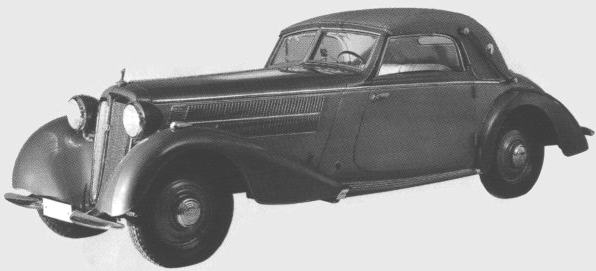
1899. Bursting with his own creativity and ideas, Horch left his
position as manager of motor construction at Benz to found August Horch
and Cie in Cologne, Germany. The next year, he built his first car,
equipped with a shock-free, two-cylinder engine. Soon afterwards, he
developed the rear-mounted gear-box and the OHV engine with overhead inlet
valves. By 1908, the company was turning out over 100 cars a year.
In 1909 Horch left his own company to form another. Unable to trade
under his own name, he chose 'Audi' - the Latin translation of Horch. Audi Automobilwerke GmbH began business. 'One of my
life's dreams has come true' August Horch.
August
Horch built the elegant 'Audi Type K' for the discriminating tastes of the
elite. Many of these 1919 innovations would become standard later
on - for example left-hand steering and the central position of the
gear-shift.
In 1919, the war of Independence started in Ireland which
would last until 1921. The following year, the Irish civil war
began which lasted until 1925 and saw brothers fighting brothers.
The end of the civil war saw a free state Government coming into power
with Eamonn DeValera as Taoiseach.
In 1926, the Berlin Automobile Exhibition showcased the new
Horch 303. Horch immediately became the marque of top quality in German
automobile history. The eight-cylinder engine would become standard for
all models after 1927.
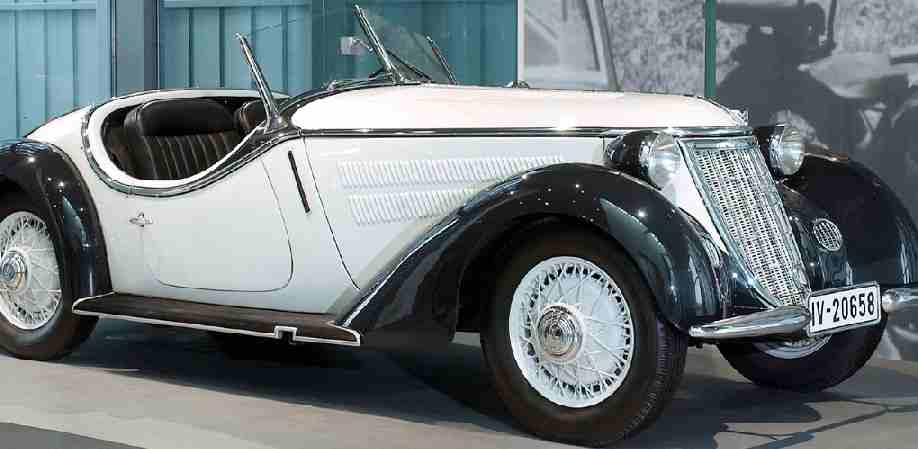
At the 1931 Salon de Paris, August Horch became the leading
name in the German automobile market. The star of the exhibition was a
yellow lacquered Cabriolet with a brown top and green morocco upholstery.
But its main feature was less cosmetic - a 12 cylinder V engine with a
six-litre cylinder capacity, a marvel of innovative engineering.
Horch, DKW, Wanderer and Audi linked forces in 1932 to create
Auto Union AG. The union was symbolised by the four rings. From the
start, Auto Union AG was Germany's second largest automobile manufacturer.
DKW was the most affordable marque, and had 18 % of the German market
in 1938. Wanderer was positioned in the mid range sector, with Audi at the
upper mid range.
The premium sector was reserved for Horch, which captured over 50 %
of this market segment. Many of the drivers who enjoyed the thrill of a
Horch sports convertible were well-known celebrities. Many of the
distinguished passengers to ride in a large Horch saloon were politicians
or even members of royalty. Thomas Mann, Alfred Neven Du Mont and Werner
Kraus all had the pleasure of driving one of the best cars ever built.

Auto Union developed a separate department for racing cars. The
sixteen-cylinder engine designed by Ferdinand Porsche created a sensation.
Sceptics laughed at its innovations, especially the engine position behind
the driver. But 27 years later this became the norm in Formula One cars.
In 1934 Hans Stuck drove the Rennwagen to break the world record at
its first official race.
One of the co-founders of the Auto Union was Baron von Oertzen. He
emigrated to South Africa in 1935, and was the first to market
German cars on three continents - Asia, Africa and Australia.
In Germany that year, a streamlined version broke a new record at the
Frankfurt autobahn - 406,3 km/h. In 1939, every fourth car
registered in Germany was made by Auto Union.
Just
when private cars were finally replacing bicycles in Germany, the outcomes
of the second world war had the most serious impact on Auto Union. The
plants were dismantled, and Auto Union was dissolved by the Soviet
military.
The directors reacted smartly, and built a new company - Auto Union GmbH,
based in Ingolstadt. The new Auto Union concentrated on DKW delivery vans
and motorcycles. All these models were marked with a 'W' for 'West' to
distinguish them from similar models produced in Saxony for East Germany.
Car production only started again in 1950.
In 1950, Stephen O' Flaherty was awarded the VW franchise for
Ireland The First Volkswagens assembled outside of Germany were assembled
in Dublin from 1950.
In 1956, a plastic-bodied DKW set new
long-distance records on the Monza race track in Italy - over 4000 miles
in 48 hours and 5 000 miles in 72 hours. From 1954 to 1964
the Auto Union achieved over 100 championship titles, 150 overall wins and
2500 class wins.
In Germany 1958, Daimler Benz bought 88 % of the share
capital of Auto Union, and a year later began constructing ultra-modern
facilities in Ingolstadt. The first DKW Junior rolled off the
assembly line at Ingolstadt. Customer demand pushed dealers to their
limits. DKW production continued until the mid sixties, when the factory
was sold to Volkswagen.
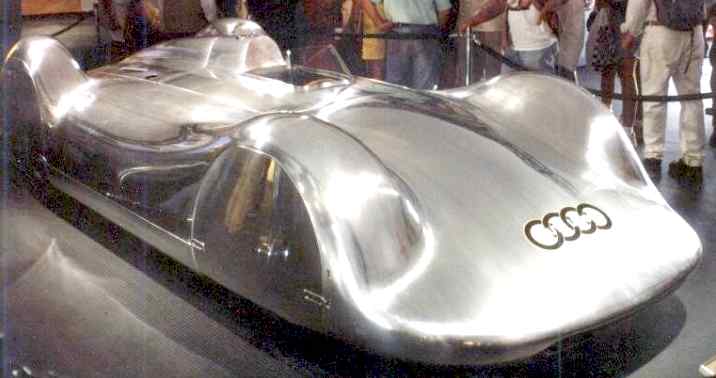
In
December 1964, Auto Union was transferred to the Volkswagen Group.
The day of the two-stroke engine was over, and Auto Union engineers had
begun working full-time to develop a competitive four-stroke model.
Meanwhile, the VW 'Beetle' helped maintain production levels - From 1965
to 1969, between three and five hundred VW's were produced each day at
Ingolstadt.
In September 1965, Audi launched its first post-war four-stroke
engine. The Audi brand was chosen because Audi had been the only pre-war
Auto Union car with front-wheel drive and a four stroke engine.
The next three years saw
launches in Germany of the medium-sized Audi 75, the Audi Super 90, and
the Audi 60 in its compact class.
Things were also looking up for another German car manufacturer - NSU AG.
They were a sensation at the Frankfurt Motor Show with the premiere in the
deluxe car class of the NSU Ro80. Twelve international journalists voted
it 'the 1967 car of the year'. However, the massive development
costs meant that NSU was ripe to join forces with a powerful associate
company.
In
1967 Motor Distributors obtained the Audi franchise for the
Republic of Ireland.
1968
saw the unveiling of the first Audi 100 - a fundamentally new car which
helped renew the value of Auto Union. In 1969, Auto Union
GmbH and NSU Motor Works formed a joint company - Audi NSU Auto Union AG.
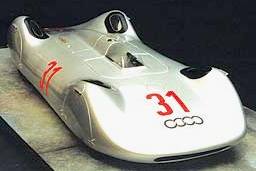
Audi NSU were quick to unveil an entirely new car, the Audi 80 which was
developed by chief design engineer, Ludwig Kraus. The Audi 80 was voted
'Car of the Year 1969' in four countries. The Audi 100 was launched
in 1972.
Two years later in Germany, the Audi 50 was launched. The Audi 50 was the
last in the 'building block' series that included Audi models 80 and 100.
With modern overhead camshaft engines, front-wheel drive, weight-saving
design and tailgate, it paved the way for the international success of the
future Audi and VW models.
The first ever 5 cylinder petrol engine was introduced with the second
generation Audi 100, in 1976. In 1977 the millionth Audi 100
came off the production line. In the same year, production of the NSU Ro80
stopped after a production run of 10 years. The
Audi 200 was launched in 1979.
December
1980 marks the landmark introduction of the first high performance
car built on four-wheel drive principles - the Audi Quattro Coupe. Quattro
is an Audi patented system that spreads the car's power across all wheels,
so the driver experiences improved handling, greater stability, lower tyre
wear, better traction and therefore better safety in all road conditions.
The quattro astonished the critics. The prototype shot up the Turracher
Hohe, Europe's steepest mountain pass, without any traction problems. The
tradition of excellence has continued up until today with breath-taking
triumphs around the world. The Audi quattro was marketed to the general
public in 1980.
The oil embargo in the early 70's had made fuel consumption a concern for
all car manufacturers. Reducing fuel consumption was a driving force at
Audi because of the important goal to reduce the environmental damage
caused by emissions.
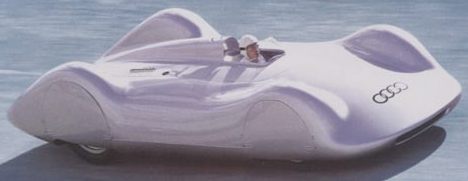
Audi gave proof to its pro-environment stance at the Frankfurt Motor Show
in 1981. The Audi vision of the car for the Year 2000 was a
full-sized deluxe saloon, with lower requirements for fuel and raw
materials, as well as greater safety, operating economy and practical
value.
A trend-setter because of its genuine innovations, the third generation
Audi 100 had similar aims to the Audi vision for the Year 2000.
Aerodynamic body design - with a drag coefficient of Cd 0.3, lighter body
sections, new or greatly revised engines for fuel economy, and advanced
levels of safety all signalled the future for car design and engineering.
After its 1982 launch, the innovations of the Audi 100 were
recognised and praised around the world.
1983 marked another impressive step towards
environmentally-friendly driving. Audi was the first German manufacturer
to receive a general operating permit for cars with catalytic converter
technology.
Audi continued to be a world leader in rallies. Drivers like Hannu Mikkola,
Michele Mouton and Stig Blomqvist helped Audi become Manufacturers World
Rally Champion in 1982 - the first German car company to win this
title.
The Audi quattro changed the shape of rallying internationally. In 1984,
Audi Sport won the Manufacturers world Rally Championship and the rally
drivers championship. Stig Blomqvist was behind the wheel - of a quattro
of course.
Audi
NSU Auto Union AG was renamed Audi AG in 1985.
In 1986, two important innovations find their place in our history:
fully-galvanised, rust-resistant bodies and the procon-ten system.
The first innovation allowed Audi to guarantee their cars against
corrosion for six years. The second innovation, procon-ten, was an early
precursor of airbag passenger technology, and considerably reduced the
chances of a driver hitting the steering wheel when in an accident.
These innovations won Audi many international awards, including the German
Industry's Innovation Prize for an outstanding ability to develop and
realise new ideas.
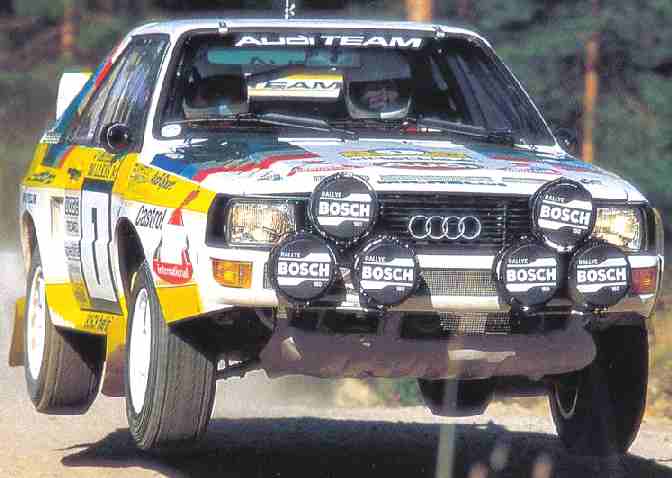
By 1986, Sarel van der Merwe was a household name in South Africa.
Driving an Audi Sport quattro he had clinched the SA Rally three times
running. In 1987, it was Geoff Mortimer who drove an Audi to victory.
The Audi Turbo was launched in South Africa in 1988, and to
celebrate, Audi imported a special motorsport version - a 2,2 litre
turbocharged car that used unleaded fuel. The mission was to set a new
Landspeed record in South Africa. Sarel van der Merwe had the honours of
taking Audi to triumph once again. The new record was 358,9 km/h.
But there was a price to pay - the traffic authorities gave Sarel a ticket
for exceeding the speed limit on a public road!
Having cleaned up on the rally tracks, Audi Sport cruised onto the USA
racetracks. The Audi quattro won the USA Trans-Am Manufacturers and
Drivers Championships.
In 1989, Audi introduced the first direct injection diesel engine
with a turbo-charger (TDI) - a triumph for automobile diesel engines.
A modified Audi 100 TDI drove 4814 km and crossed nine countries in Europe
on one tank of petrol. Its average speed was 60,2 km/h, and it consumed
only 1,7 litres per 100 km.
Another innovation in 1989 was the Audi duo hybrid system. A
conventional petrol or diesel engine drove the front wheels and a 9,3 kW
electric engine drove the rear. So for driving in the country, the Audi
duo had the usual acceleration, range and top speed. But the electric
engine eliminated exhaust emissions and noise for driving in the city. The
driver could activate either power unit easily, at any time.
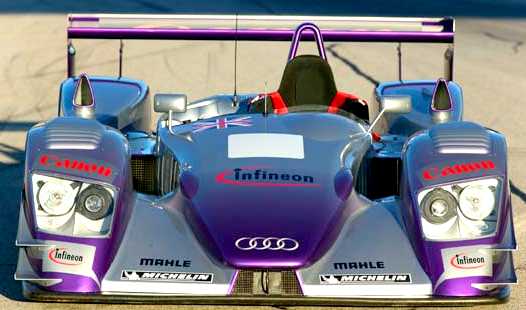
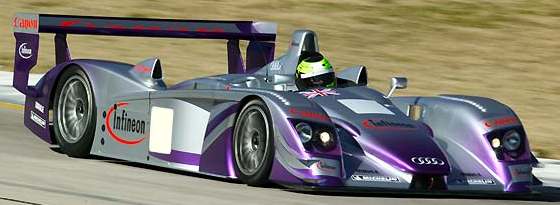
1990,
the start of the last decade of the millennium, was cause for celebration
at Audi: the seven millionth Audi was produced in Ingolstadt, and the Audi
quattro was ten years old. But - as always - Audi looked ahead, not
behind, and the Board pledged to become ‘the most attractive European
marque’.
The fourth generation Audi 100 was launched in Germany in 1990, and
catalytic converters became standard equipment in all Audi cars where
lead-free petrol is available.
In 1991, Audi renewed its entire range in just one year. 1991 saw
the launches of the Cabriolet, the 100 Avant, the S4 and S4 Avant, and the
new Audi 80. Audi also gave the Audi Coupe a facelift and a V6 engine. The
flagship of the range - the Audi A8 - was given a 4,2 litre engine.
Audi exhibited two design studies in 1991. The quattro Spyder was unveiled
in Frankfurt, and the Avus quattro in Tokyo. Both caused a sensation. The
most impressive feature was the aluminium construction which reduced
weight and used resources more efficiently. Another example of how Audi
pioneered new technologies to shape the future of the automobile.
The world premiere of the aluminium Audi - the A8 - was held at the Geneva
Motor Show in 1994. With this innovation Audi offered the world a
truly forward-looking and environment-friendly concept. Critics realised
that using aluminium as a basic construction material was a smart
decision: its light weight ensures reduced fuel consumption at no
sacrifice to firmness and rigidity. And aluminium can be recycled almost
limitlessly.
In the same year, Audi standardised the names of all their models around
the world to A4, A6, and A8.
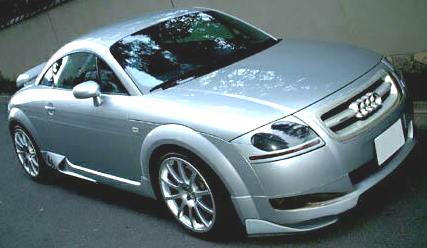
Motorsport triumphs continued. By 1996, the Super Touring Cup (STW-Cup)
belonged entirely to the four rings and the Audi quattro. The Italian
Emanuele Pirro won the overall prize in Germany. Frank Biela won the
British Touring Car Championship, and Rinaldo Capello won the Italian
Touring Car Championship - all driving the Audi A4 quattro. The remarkable
quattro also triumphed in touring car competitions in Belgium,
Australia
and Spain.
1999 is a high point in Audi's remarkable history: all models have
been advanced, and are now more exciting than ever. The innovative design
of the A6 is winning critical acclaim.
The
new improved Audi A8 and A4 give yet more evidence of Audi's leadership in
shaping the automotive world of tomorrow. The Audi A3, launched in Ireland
has set a new standard for luxury in the compact class. And the Audi TT is
the most recent evidence of Audi's commitment to "Vursprung durch
Technik".
On
into the new millennium, Audi continue to shine with new models to whet
the appetite of any car enthusiast. See the links below for the latest
cars and very the very best deals around.
       
Please
click on the links above to find out about these famous automotive
makers. If your company is not included and you would like to be
listed, please let us know.
UK
VEHICLE INSURANCE ONLINE A - Z
No
matter what car, van or bike you drive, we're all looking for great
value and quality in our UK motor insurance? But who is the best
- who is the cheapest and who offers the great service in the event of
a claim?
See
the insurance companies below who claim to offer competitive cover at
sensible prices, our
guide to the jargon and tips for cutting your quote - Good
Luck:-
Automotive
Prehistory Links
CONTACTS
A
taste for adventure
capitalists
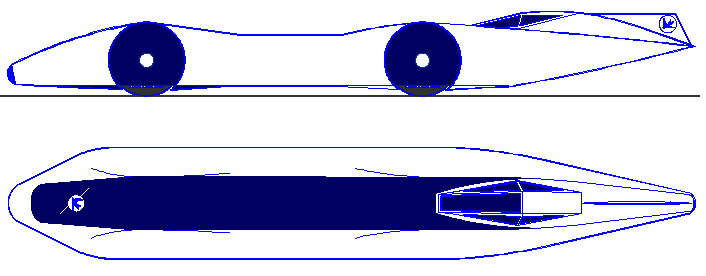
The
world's fastest electric car: 350mph + using energy from nature.
Featuring built in battery cartridge exchange, charged using renewable
solar energy. Sponsors sought for the 2016 season.
|










